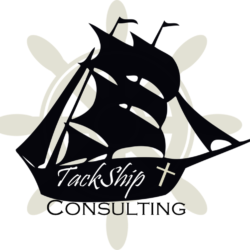Why is it important to find your strengths
Where do you spend your energy, working on what you are already strong at or trying to improve where you feel you have weaknesses?
In life, it can be beneficial to know what areas you excel at and which ones need some work. When you take the time to find your specific strengths, you can know what goes best with your personality while not overwhelming yourself.
Even though you might have heard growing up that weaknesses are “failures,” that’s actually quite the opposite. By taking the time to learn, grow, and find what you’re good at, you can become more successful because you can hone in those specific areas.
Examples of common strengths in the workplace
This table showcases some of the most common strengths in the workplace. I want to challenge you to pick your top 3-5 skills and write them down on a piece of paper. Then take a look and see how you’re currently utilizing these skills in your job, and then for the ones you’re not using, take those to your boss and ask how you might be able to incorporate them into your daily tasks.
| Dependable | Hard Working | Flexible | Team-Oriented |
| Leader | Interpersonal Skills | Self-Motivated | Organized |
| Strong Will-Power | Focused | Motivated | Analytical Thinking |
| Strategic Thinking | Willing To Help | Always Eager To Learn | Able To Communicate |
| Fast Learner | Disciplined | Confident | Reliable |
| Patient | Active Listening | Honesty | Strong Work Ethic |
Consider this, if you are working in your strength areas, you may find that you can work longer and more energized than when you have to do things that are not your strength areas. Here is an example, one of my Clifton StrengthsFinder Strengths is in the Influencer category: Activator. I love to put new ideas into action. I have most of my energy at the start of a project.
My strength is not dealing with day-to-day or execution of a project, whereas other people like having a checklist of things to do and feel a sense of accomplishment for completing tasks. I feel best when I am getting things started and moving ideas into action, then I want to find the next idea and help put it into action. When it comes to Execution, my top Strength is in. The arranger is a strength where I like to look at resources and optimize them for the situation that they are in.
This is great when things need optimization, but I may not be your guy when things are optimized already, and people with strengths like Focus, Deliberative, and Discipline may be the right people to execute the plan to completion.
Examples of common weaknesses in the workplace
Follow the same protocol we did above for the strengths, but now for your weaknesses. Write down 3-5 areas that you wish to improve on a piece of paper. Then create a couple of ideas that can help you mitigate these areas. This may be a goal, a tool to help you, and/or talking to your peers, your boss, or other trusted people (Executive Coach?) to figure out how to overcome your weaknesses.
Yes, it can be uncomfortable talking about your weaknesses. But your vulnerability and honesty in recognizing these areas can help you and your team put the right people in the right jobs for success.
| Complainer | Unwilling To Learn | Constant Complaining | Lazy |
| Impulsive | Impatient | Hesitant | Overburdening Themselves |
| Can’t Delegate To Their Team | Low Confidence | Lack of Patience | Low Productivity |
| Perfectionist | Unorganized | Unmotivated | Unwilling To Help |
| Passive Listening | Tardiness | Timid | Talkative |
| Can’t Create A Work-Life Balance | Selfish | Micromanaging | Constant Self-Criticism |
Now, I shared about strengths above, what about weaknesses? I recently spent way too much of my time scheduling youth lacrosse for K-8th grade kids in San Diego. I love it from the point of view of arranging teams to play each other, and continually tweaking the schedule to keep things optimized. However, details often sneak by me and I miss some things. It is embarrassing and humbling when people start calling and telling me that the schedule is all messed up. Next year I need to find a person to help me with this, but going over the schedule and making sure all the details are right before it is published!
Here is another example: when painting a room, I am all over the roller, doing big picture application of paint to the walls (another strength is Strategic), whereas my wife is more interested in brushwork along the edges and ensuring that the detail is correct, as well as filling in the areas where maybe the roller did not apply paint as evenly (it’s the roller, not the painter!).
One of my weaknesses is details. What do I do about that? Should I go out and take a class, get training, or find a mentor? I think that is appropriate to some degree, but what I think is great is that I found a teammate who has a different strength than me, in this case, detail work, so that we as a team can accomplish more, better.
How to utilize your skills at work
When it comes to my wife and me, we are very different, but together we make things work. The same can be said for your team. Can you get your team working where they are energized and excel, and figure out where that is, and where they can complement each other?
If you’re a natural-born leader that knows how to motivate your coworkers while keeping the team moving together cohesively, then speak with your boss about how and what you need to do to start making the transition into a leadership role.
Or maybe you are detailed oriented and want to start transitioning from the sales team into data analysis for your current employers. Go to your boss and see if there’s a way to start making that dream a reality.
Now, sometimes it’s not possible to incorporate your skills into your current role, and if that’s the case, it would be wise to start looking for a new position that will put your strengths to good use. When you can do that, you may find more success and optimization in your organization.
Get Professional Help
Here at Tackship Consulting, we can help you or your team discover their strengths and how they can start incorporating them into their everyday tasks. Whether transitioning to another role or providing more opportunities where they can shine, we are here for you.
Activate your passion, and optimize your performance with Tackship Consulting. Schedule your free consultation to learn more about the process!












